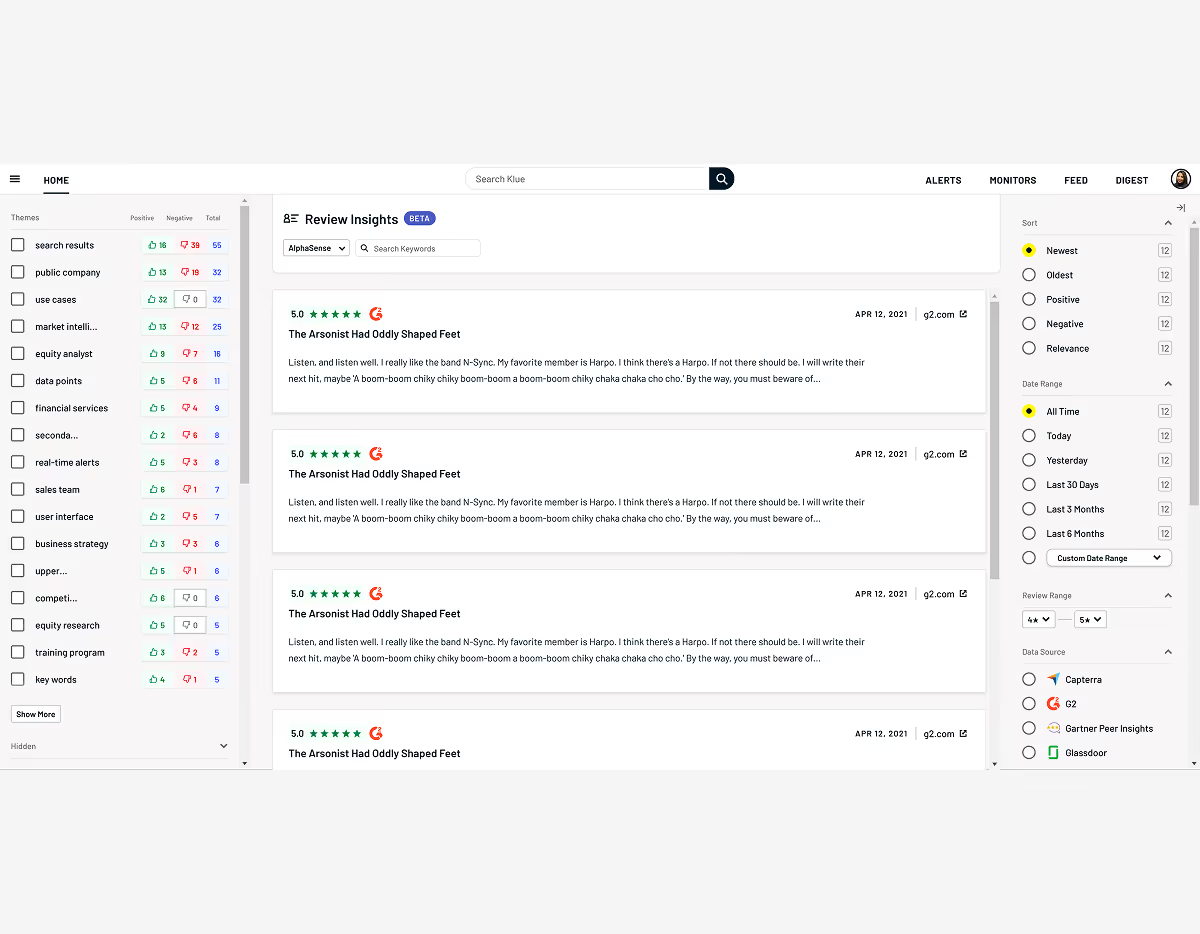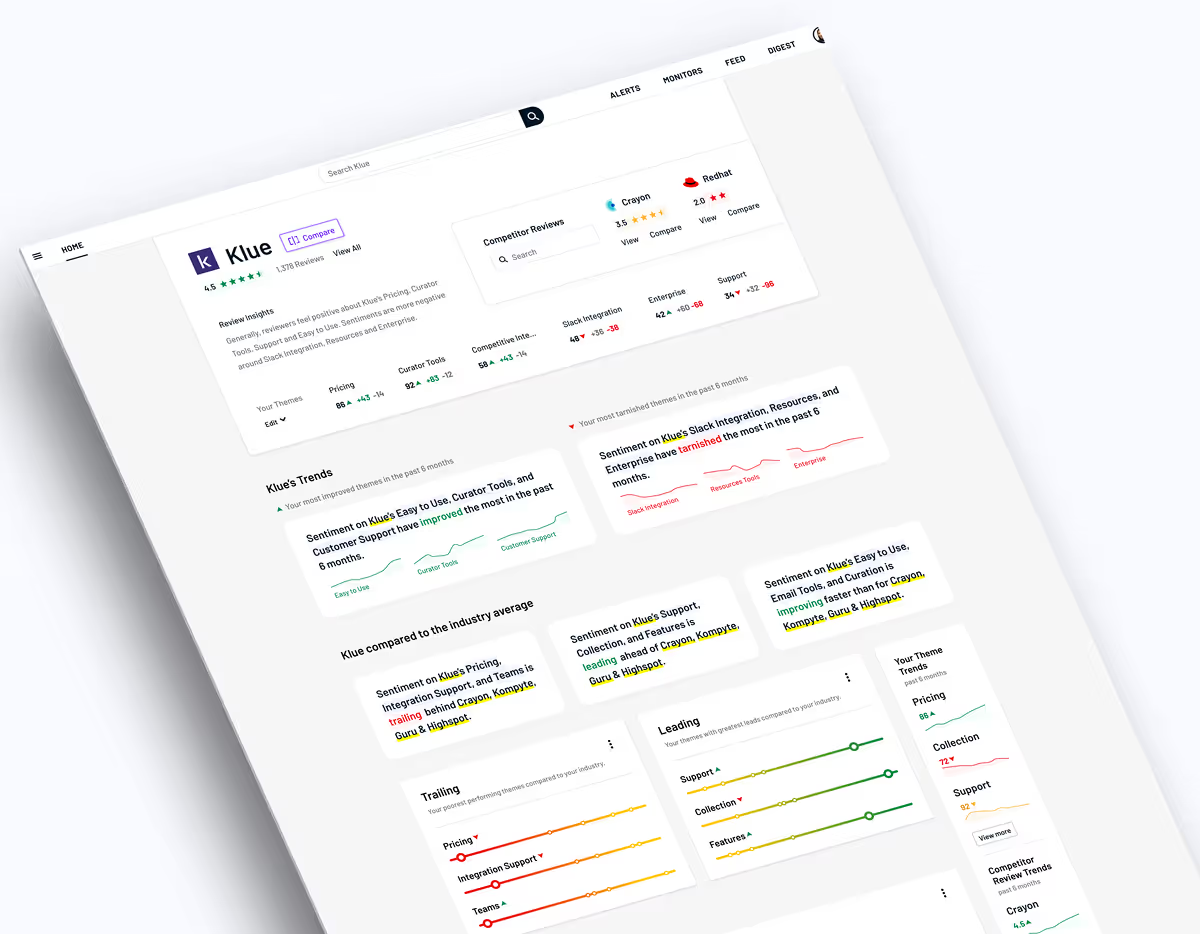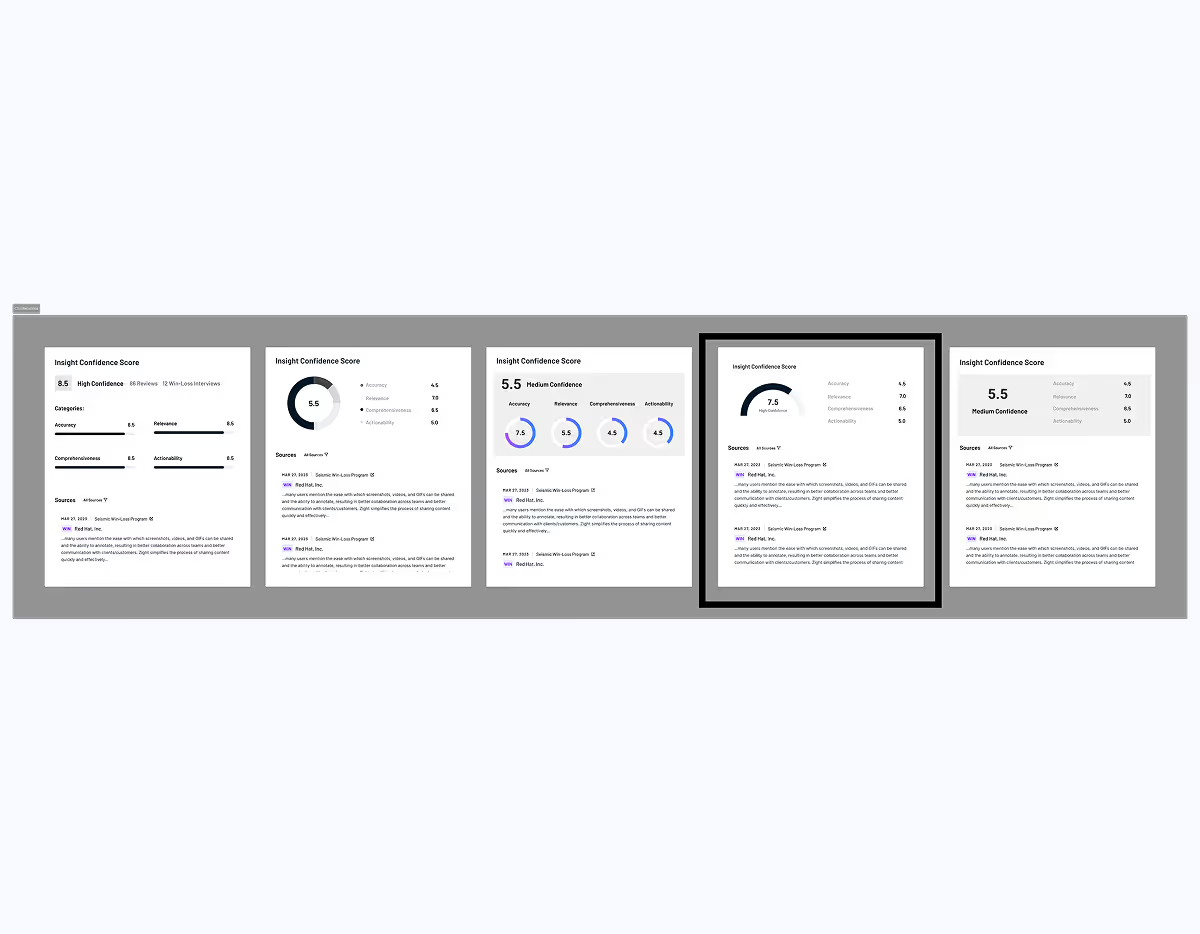Insights Module
Transforming raw AI output into actionable, trustworthy buyer intelligence at scale.
ML Team
Why.
Before the Insight Module, users had to manually sift through hundreds of reviews, interviews, and transcripts to find patterns. It was a slow, error-prone process that didn’t scale. Valuable feedback was buried across sources, making it nearly impossible for teams to extract insights efficiently, especially when working across multiple products or markets. Delivering “Insights at Scale” became a key company OKR, with a clear business need to automate the surfacing of buyer signals, win/loss reasons, and competitive themes.


What.
When I joined, the ML team had built an MVP that clustered review snippets by topic, a promising proof of concept, but not yet a user-facing product. My job was to turn this into a robust, GA-ready product.

I evolved the feature into a full Insight Module:
- Prioritization: Insights were ranked by frequency and significance, not just grouped.
- Summarization: The UI distilled clusters into concise, high-signal summaries so users could quickly grasp key themes.
- Trust & Flexibility: The biggest challenge was making AI outputs feel trustworthy and actionable. I designed expandable insight cards: high-level summaries up front, with direct quotes, sentiment, and volume data available on demand.
- User Validation: We ran moderated usability tests. Users wanted both fast clarity and the ability to “dig deeper” if they questioned the AI, so I focused on layered context and transparency in the design.
Impact.

Testing showed that trust was as important as speed. Users wanted to see sources and understand the confidence behind each insight. In response, we:
- Expanded data sources: Added support for G2 reviews, call transcripts, and win/loss interviews, all visualized in a unified experience.
- Planned confidence scores: Began work on surfacing a confidence metric for each insight, helping users judge reliability at a glance.
This project was a good lesson in designing for AI-first products, balancing clarity, transparency, and flexibility. I learned how to turn raw ML output into something users trust, and the importance of close collaboration with engineering and product to deliver a GA-ready module.